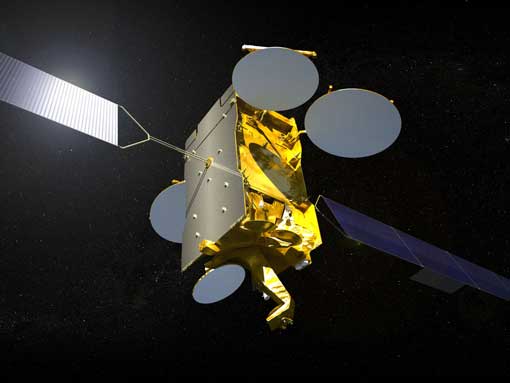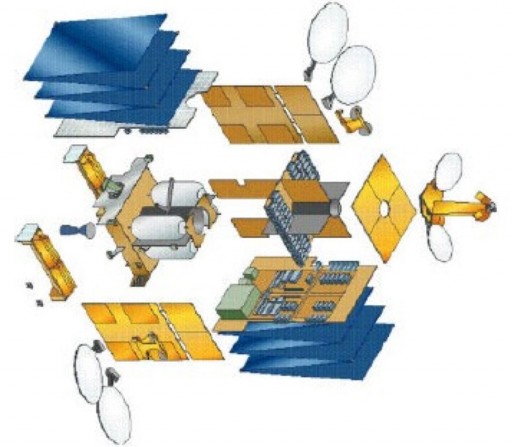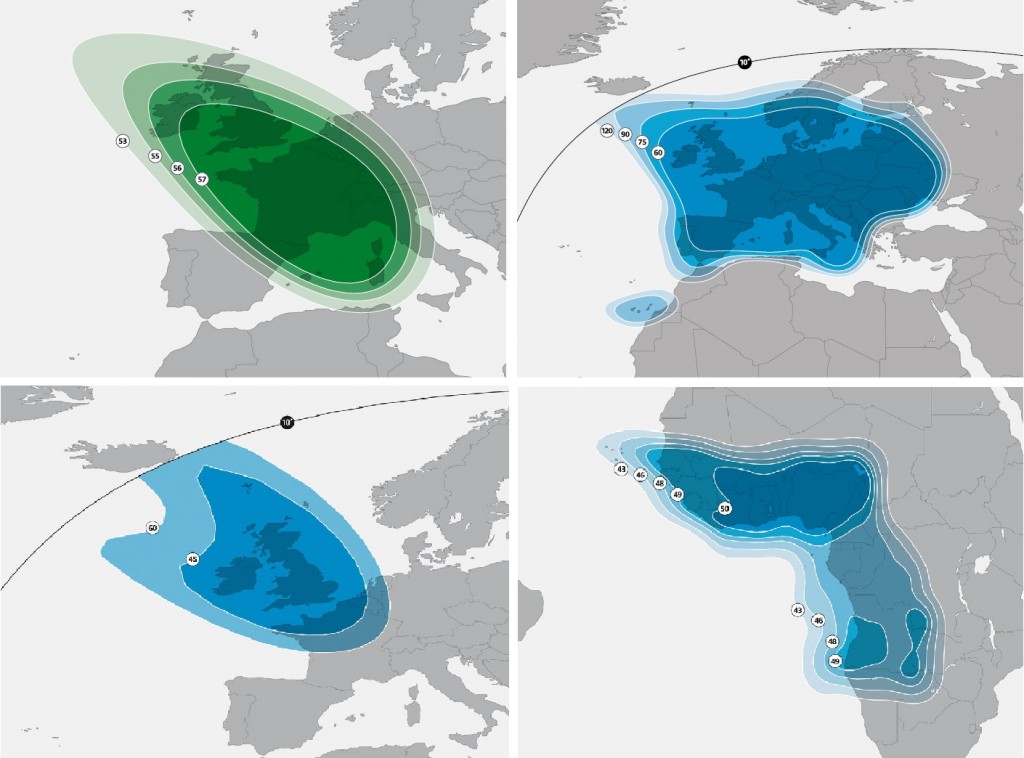Astra 2G

Astra 2G is a commercial communications satellite built by Airbus Defence and Space for operation by SES, Luxembourg. It is part of SES’ operational Astra satellite fleet delivering a variety of communications services on a global scale under the SES Astra and SES World Skies divisions. The satellite was ordered as part of a four-satellite contract between SES and Airbus Defence and Space for the Astra 2E, 2F, 2G and 5B satellites launched between 2012 and 2014 using the Ariane 5 and Proton launch vehicles.
Astra 2G uses the flight-proven Eurostar-3000 spacecraft platform that is capable of hosting powerful communications payloads with a payload power exceeding 10,000 Watts. The satellite has a launch mass of 6,002 Kilograms. Overall, the spacecraft is over six meters tall and has a span of 31 meters when fully deployed in orbit.
The satellite platform consists of a central cylinder which facilitates the propellant tanks for the bi-propellant propulsion system. The cylinder consists of several segments connected via ring-joints. Internal composite panels are mounted to the cylinder to facilitate the external panels and provide mounting platforms for the various satellite components.
Two deployable solar arrays are used for power generation featuring triple-junction Gallium-Arsenide solar cells. Power is stored in onboard batteries while a Power Conditioning and Distribution Unit regulates the satellite’s power bus and controls the state of charge of the batteries.

A dedicated bi-propellant propulsion system will be used for apogee maneuvers and stationkeeping maneuvers in Geostationary Orbit. Eurostar-3000 is three-axis stabilized featuring a state of the art navigation system. The satellite provides precise Earth-pointing capabilities. E-3000 provides the option of adding an electric propulsion system.
Astra G hosts a powerful communications payload operating in the Ku- and Ka-Band frequency ranges. The satellite facilitates 62 Ku-Band and 4 Ka-Band transponders operating at 250, 500 and 600 MHz. Ku-Band coverage is divided in three different beams – a Europe Ku Beam covering entire continental Europe with the exception of the extremely northern regions, a UK Ku Spot beam delivering focused coverage to the United Kingdom and parts of western Europe, and a West Africa Ku Beam that covers a zone stretching from Senegal to Nigeria/Chad and south to Namibia.
The Ka-Band payload is dedicated to a Europe Interconnect coverage zone over the United Kingdom and a large portion of western and central Europe.
Astra 2G will deliver broadcast, VSAT and broadband services including Direct-to-Home television with special focus on markets in the UK/Ireland and Europe. Using spot beam and pan-European coverage beams, Astra 2G accommodates pay-TV and free-to-air broadcasters. SES customers include a number of media companies including BBC, ITV, MTV, UK TV and Discovery. With its coverage of western Africa, Astra 2G will also cater to emerging markets.
The satellite is hosting an X/Ka-Band payload to be operated by the government of Luxembourg. This payload will allow Luxembourg to preserve its rights to the orbital position at 28.2° East in Geostationary Orbit. Astra 2G will remain at that position for three months which will extend Luxembourg’s rights to this orbital position which would otherwise expire in January 2015.
The Astra 2G satellite will be stationed at a position of 28.5 degrees in Geostationary Orbit with a planned operational mission of at least 15 years.
Coverage Maps

